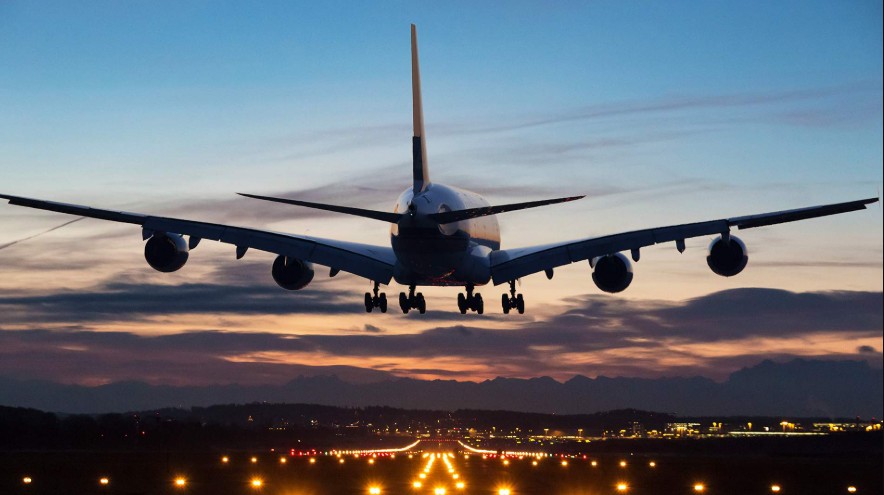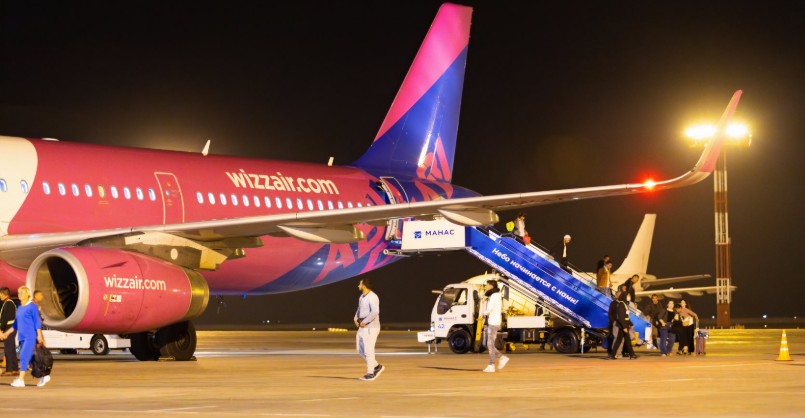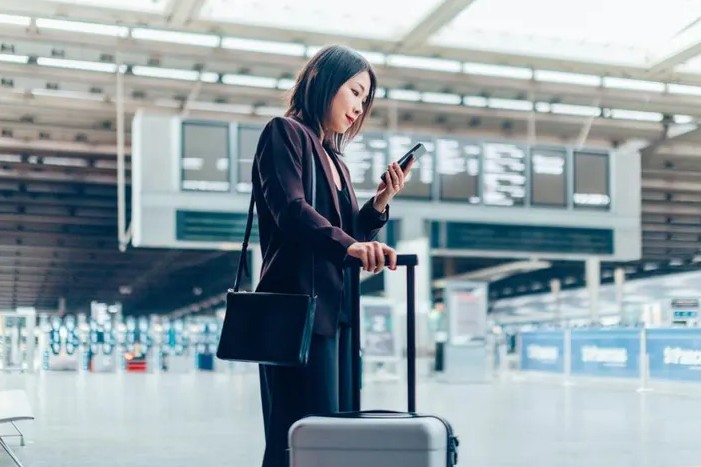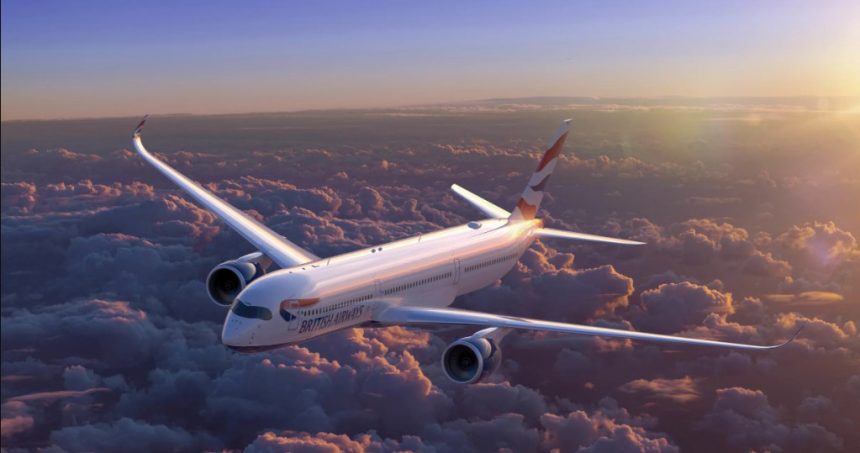The term “What Does Red-Eye Flight Mean?” might initially seem puzzling, but it holds significant importance for travellers, particularly those seeking cost-effective and time-efficient travel options in the UK. In this comprehensive blog post, we will explore every facet of red-eye flights: from their definition and unique benefits to detailed practical tips and a deep dive into how they compare with standard daytime flights. By the end of this guide, you’ll understand why red-eye flights might be an ideal choice for your next journey.
What Does Red-Eye Flight Mean?
What Does Red-Eye Flight Mean? In simple words, red-eye flights are nighttime trips that leave late in the evening and reach their destination early the next morning. The evocative name comes from the tired, red eyes that passengers often have as a result of limited sleep during travel. Despite potential fatigue, these flights offer several standout benefits:
- Efficient Use of Time: Travel while you sleep and make the most out of your day.
- Cost Savings: Typically, red-eye flights are priced lower compared to peak-hour services.
- Strategic Planning: Ideal for business travellers and holidaymakers who want a head-start at their destination.
How Do Red-Eye Flights Work for UK Travellers?

UK travellers find red-eye flights especially attractive for several reasons. The strategic timing and potential savings make them a go-to option for both international and long-haul journeys. Let’s delve into the practical mechanics and benefits:
Why are Red-Eye Flights Popular in the UK?
- Maximising Business Hours: For many business travellers in the UK, arriving early in a foreign city means that meetings and conferences can begin right away.
- Saving on Accommodation: Travelling overnight means there is no need to book an extra night at a hotel, effectively cutting costs.
- Less Crowded Airports: With fewer flights and passengers during the late-night hours, the travel experience can be smoother and less stressful.
How Are the Flight Schedules Typically Arranged?
- Departure: Most red-eye flights leave between 22:00 and midnight, which means you’re likely travelling during quiet airport hours.
- In-Flight Experience: Given the nature of these flights, airlines often take measures to ensure a comfortable sleep environment, ranging from adjustable seating to quieter cabins.
- Arrival: Landing early in the morning gives travellers the benefit of a full day at their destination, whether it’s for business or leisure.
Can Red-Eye Flights Save You Time and Money?
One of the biggest draws to red-eye flights is the balance of saving both time and money. Let’s explore the financial and scheduling benefits in greater detail.
What Benefits Do Red-Eye Flights Offer?
- Time Optimisation: By flying overnight, you wake up at your destination ready to start the day. This is crucial for business travellers who want to maximise productivity.
- Cost-Efficiency: With lower demand and reduced operational costs for airlines during these hours, ticket prices are generally more competitive.
- Reduced Need for Extra Accommodation: An overnight flight removes the need for paying an extra night’s hotel fee, which is particularly beneficial on international journeys.
How Does the Cost and Schedule Compare?
Below is an expanded comparison table reflecting trends and data from 2025. This table highlights key differences between red-eye flights and standard daytime flights for UK travellers:
| Criteria | Red Eye Flight | Standard Daytime Flight |
| Departure Time | Typically, 22:00 to 00:00 | Between 06:00 and 14:00 |
| Arrival Time | Generally, 05:00 to 08:00 | Mid-morning to evening (09:00 to 20:00) |
| Ticket Pricing | Often 10-25% lower due to off-peak hours | Higher pricing due to peak travel demand |
| Passenger Volume | Lower occupancy, resulting in less congestion | Higher number of passengers during daytime peak hours |
| Airline Amenities | Some airlines enhance seating comfort for sleep | Standard amenities geared towards short-haul travel |
| Extra Expenses | No additional accommodation costs since you travel overnight | Possible extra costs for overnight stays |
| Ideal For | Business travellers, cost-conscious holidaymakers | Leisure travellers with flexible daytime schedules |
How Have Red-Eye Flights Evolved Over Time?
Understanding the evolution of red-eye flights offers insight into why they remain popular today.
What’s the History Behind Red-Eye Flights?

- Early Beginnings: Red-eye flights were first introduced as airlines looked for ways to make the most out of unused aircraft and airport capacity during nighttime hours.
- Growing Demand: As global travel increased, overnight flights became a strategic solution to meet the needs of international business and leisure travel.
- Modern Enhancements: Today’s airlines have refined the red-eye experience by offering better seating, in-flight entertainment options, and even quiet cabins to improve the chances of a restful sleep.
How Have Airlines Improved the Experience?
- Seating Innovations: Many airlines now offer premium economy sections on red-eye flights that feature extra legroom and increased recline.
- Sleep-Aiding Amenities: From sleep kits to adjustable lighting, the travel experience has been optimized for those who need rest while flying.
- Better Scheduling: With optimized turnaround times and streamlined boarding processes, airlines ensure that red-eye flights operate more efficiently than ever.
What Are the Practical Challenges of Red-Eye Flights?
Every travel method has its trade-offs, and red-eye flights are no exception. It’s important to consider these challenges along with the benefits.
What Are the Main Drawbacks to Consider?
- Sleep Disruptions: Since these flights occur during conventional sleep hours, passengers may suffer from a lack of sufficient rest.
- Timing Adjustments: Adjusting to a new time zone can be difficult when you’re already sleep-deprived after an overnight flight.
- Less Onboard Entertainment: Some airlines might limit in-flight services during the overnight hours, prioritizing a quiet environment over entertainment.
- Personal Preference: Some travellers simply prefer daytime travel, both for the routine and the perceived overall comfort.
How Can You Mitigate These Challenges?
- Pre-Flight Preparation: Adjust your sleep schedule in the days leading up to your flight, if possible.
- Choose the Right Flight: Look for airlines that specialize in long-haul overnight flights and offer enhanced sleep-related amenities.
- Onboard Comfort Strategies: Use items such as earplugs, eye masks, and comfortable travel pillows to maximize your in-flight rest.
- Plan for Recovery: Schedule a light day following your arrival to gradually get back on track if you’re experiencing fatigue.
Are Red-Eye Flights a Smart Choice for Business and Leisure Travellers?
With so many factors in play, the question arises: are red-eye flights truly advantageous for all types of travellers?
Who Benefits Most From Red-Eye Flights?

- Business Travellers: For those needing to be at their destination for early meetings or conferences, red-eye flights are invaluable. They eliminate the necessity of losing a full day for travel.
- Cost-Conscious Travellers: Savings on flight fares and accommodation costs make red-eye flights an excellent choice for budget travellers.
- Adventure Seekers: Travellers who wish to maximize their time exploring a destination can benefit immensely by arriving in the early hours and enjoying a full day out.
What Should You Consider When Deciding?
- Your Sleep Needs: If you can adjust your sleeping habits or have had experience with overnight travel before, the red-eye option might be ideal.
- Travel Itinerary: If your schedule allows for a recovery period after arrival, the temporary discomfort may be negligible compared to the overall benefits.
- Personal Health: Consider how travel stress and sleep deprivation affect you personally. If you have underlying health issues, consult a professional before opting for long-haul overnight travel.
What Are the Strategic Tips for Booking a Red-Eye Flight?
Taking steps to ensure a more comfortable red-eye flight can make all the difference in your travel experience. Here are some strategic tips to consider:
How Can You Prepare for a More Comfortable Flight?
- Invest in Comfort Accessories: High-quality travel pillows, blankets, and sleep masks can help create a mini sleep sanctuary on the plane.
- Select the Best Seat: If possible, choose seats near the wings where turbulence is minimal, and consider booking seats in premium economy sections where available.
- Hydrate and Eat Wisely: Staying well-hydrated and having a light meal before boarding can help your body adjust better to sleep.
- Dress Comfortably: Wear loose-fitting clothing that facilitates ease of movement and greater comfort throughout the flight.
- Plan In-Flight Activities: Bring along soothing music or guided meditation apps to help relax your mind and body.
- Pre-Flight Sleep: Try to get adequate rest before the flight so you’re not starting sleep-deprived.
Conclusion
The title “What Does Red-Eye Flight Mean? Discover the Basics” encapsulates the core of what red-eye flights offer—a strategic, overnight travel option that saves both time and money while providing unique advantages and a few challenges. For UK travellers, this option can transform the way you plan your journeys, especially for business trips or budget-conscious international travel.
By examining the detailed mechanics of red-eye flights, comparing them with standard daytime options, and offering actionable tips and insights, this guide aims to prepare you to make informed travel choices. Whether you are looking to maximize productivity, cut down on travel expenses, or simply experience a different style of flying, red-eye flights present a viable, modern solution.
FAQs About Red-Eye Flights
Are Red-Eye Flights More Affordable?
Yes, generally speaking, red-eye flights are often less expensive than their daytime counterparts due to lower demand during off-peak travel hours.
Do Red-Eye Flights Compromise Safety?
Red-eye flights are held to the same rigorous safety regulations as daytime flights. The time of day does not affect the stringent safety protocols maintained by airlines.
Is It Worth the Discomfort?
Many travellers feel that the time savings and lower costs outweigh the temporary discomfort of reduced sleep. Ultimately, it depends on individual preferences and travel goals.






